 Politics
Politics  Politics
Politics  Weird Stuff
Weird Stuff Ten Bizarre Facts About The Doge Meme
 Our World
Our World 10 Ways Your Christmas Tree Is More Lit Than You Think
 Movies and TV
Movies and TV The 10 Coolest Stars to Set Sail on The Love Boat
 History
History 10 Things You Didn’t Know About the American National Anthem
 Technology
Technology Top 10 Everyday Tech Buzzwords That Hide a Darker Past
 Humans
Humans 10 Everyday Human Behaviors That Are Actually Survival Instincts
 Animals
Animals 10 Animals That Humiliated and Harmed Historical Leaders
 History
History 10 Most Influential Protests in Modern History
 Creepy
Creepy 10 More Representations of Death from Myth, Legend, and Folktale
 Politics
Politics 10 Political Scandals That Sent Crowds Into the Streets
 Weird Stuff
Weird Stuff Ten Bizarre Facts About The Doge Meme
 Our World
Our World 10 Ways Your Christmas Tree Is More Lit Than You Think
Who's Behind Listverse?

Jamie Frater
Head Editor
Jamie founded Listverse due to an insatiable desire to share fascinating, obscure, and bizarre facts. He has been a guest speaker on numerous national radio and television stations and is a five time published author.
More About Us Movies and TV
Movies and TV The 10 Coolest Stars to Set Sail on The Love Boat
 History
History 10 Things You Didn’t Know About the American National Anthem
 Technology
Technology Top 10 Everyday Tech Buzzwords That Hide a Darker Past
 Humans
Humans 10 Everyday Human Behaviors That Are Actually Survival Instincts
 Animals
Animals 10 Animals That Humiliated and Harmed Historical Leaders
 History
History 10 Most Influential Protests in Modern History
 Creepy
Creepy 10 More Representations of Death from Myth, Legend, and Folktale
10 Executioners Who Met Their Own Dark Ends
For as long as there have been laws, there has been the death penalty. That means that someone has always been needed to carry out the sentence, and while some sanctioned executioners seem to have been able to leave their work at the office, others have taken their work to heart…. and to extremes.
10Simon Grandjean

On May 12, 1625, Dijon executioner Simon Grandjean and his wife (who served as his assistant), were handed what should have been an easy if not heartbreaking assignment. After a dead child had been found in the woods wrapped in an unfortunately monogrammed blanket, a guilty verdict was passed on the baby’s 21-year-old mother, Helene Gillet. In spite of Helene’s insistence that not only was she innocent of the murder but that the baby had been conceived after the unwanted attentions of the family tutor, the sentence stood. Because of her family’s status—and in spite of the fact that her father had already disowned her—she was allowed an execution by beheading.
While Helene and her mother appealed to the courts, a rumor started to circulate that someone from the nearby Bernadine abbey had foreseen Helene’s death from old age and natural causes rather than on the executioner’s block, but still the law insisted she die.
Part of the responsibilities of the executioner is not to botch things up, and unfortunately for Grandjean, that is precisely what he did. His first swing of the sword clipped her shoulder and even more bizarrely, the second swing was deflected. In theory, tying back a woman’s hair should have given the executioner a clean shot at her neck, but the story says that it was the knot her hair was tied in that partially blocked the second swing.
By the time the second swing failed, the crowd had already been worked into a frenzy and was hurling anything they could at the platform. Grandjean retreated to a nearby chapel, while his wife grabbed the condemned and dragged her beneath the platform to shield her from the crowd and to finish the job with a pair of shears. The crowd was having none of it, though, and broke through the barricades to kill first Madame Grandjean, then to drag the executioner from his hiding spot and tear him to shreds, too.
Helene was patched up, and none of the wounds the Grandjeans had managed to inflict were life-threatening. That created a bit of a problem, as she was still considered guilty and Dijon rather suddenly had no executioner. She was ultimately pardoned by Henrietta Maria, the sister of Louis XIII, and was said to have spent the rest of her life in a convent.
9Artur Braun
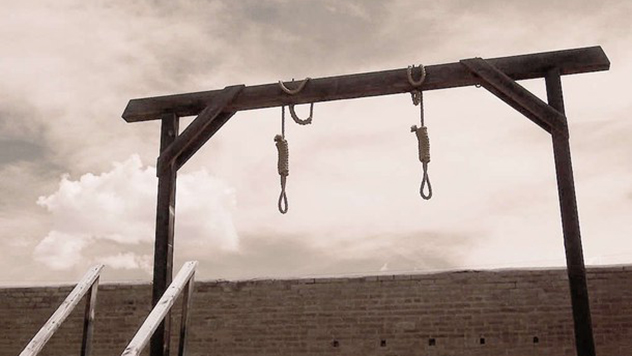
During the first few decades of the 20th century, Poland reportedly had some trouble finding a reliable executioner. There were problems with one after the other, with one man even committing suicide after claiming he was haunted by the ghosts of the people he had killed. Another ended up suing the government, after a particularly bitter official ordered the execution to proceed without the standard black hood, giving the condemned a chance to kick and incapacitate his executioner.
In November of 1932, they were looking for a new man to fill those dark shoes. Out of 120 applicants, they chose Artur Braun. Unfortunately, Braun’s career ended before it even started. Overjoyed at his success in securing a new job, Braun and his friends decided to celebrate by heading out for a few drinks, as you do. Things got out of hand, though, and he apparently wasn’t a very nice drunk.
Reports say that Braun and his friends ended the night in a suburban bar, and that is where the guns came out. He drew a pistol and started firing, for whatever reason, and from there the night turned into an outright barroom brawl. Broken brandy bottles became weapons, innocent bystanders were beaten senseless, and Braun was fired from his new job before he even had the chance to execute anyone.
While it’s unclear just what became of Braun after his shooting spree, the Minister of Justice later said that the next man appointed as the chief executioner was going to be one who never drank.
8Dick Bauf

Dick Bauf was born in Ireland into a less-than-stellar family situation, and was only 12 years old when his parents were arrested and convicted of breaking and entering with a side of murder. Child care being a different thing in the 17th century, the boy’s life was spared on one condition: that he be the one to execute his parents. Reportedly unwilling at first, Bauf’s parents gave their approval and told him that they would rather be hanged by him than by an uncaring stranger, and if it meant saving his own life, he needed to do it.
So he did.
After the execution, he found he was completely unable to find any honest work and turned to pickpocketing. From there, he fell in with a group of thieves and was tasked with scouting out churches in particular, to see what sort of treasures he could grab. Traveling the country, he finally decided that petty theft was not entirely his thing, and thought he could make a much better living as a highwayman. He was incredibly good at it, and his victims finally appealed to the government in hopes that they would help bring Bauf to justice. After Bauf captured a group of men looking to claim the reward on his head, he burned them alive in a barn and headed to Scotland until the heat died down.
Once there, he made the ultimately fatal mistake of trying to hook up with a woman married to a very, very vengeful man. Bauf was arrested, sent back to Ireland and, in spite of offering to pay a hefty sum for mercy, was hanged on May 15, 1702.
7Cratwell

Saint Thomas More was executed on July 6, 1535, for taking a stand against Henry VIII’s declaration that no one—not even the Pope—sat above him in the hierarchy of the world. All of his citizens were required to take an oath acknowledging the declaration, but St Thomas refused to speak the words that might have saved his life. After his execution, his head was mounted on London Bridge for several months, until his daughter bought it.
At the time, London’s executioner was a man whose name has only been preserved as Mr Cratwell. Serving during the reign of Henry VIII meant that he likely had a full schedule, but Cratwell still managed to find time to attend the annual Bartholomew’s Fair. The fair, held every August in honor of Saint Bartholomew, was one of the major events of the year. Smithfield was filled with market stalls and vendors, acrobats, musicians, puppeteers and performers and freaks. All those market stands were apparently too much temptation for Cratwell, and he was caught stealing from one of them.
Somewhere around 20,000 people turned out to see London’s executioner—who was described as “a conninge butcher in quarteringe of men”—hanged.
6Capeluche
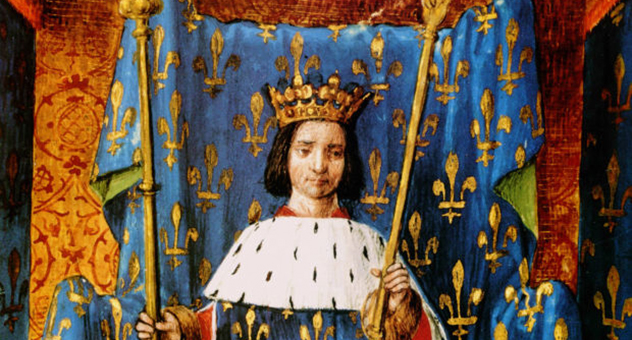
In the early 1400s, Paris was occupied by the Armagnacs, and residents were determined to take their city back. Revolts and rebellions swept across the city, and with the first strike in May they had control of Charles VI and several heads of the Armagnac invaders. They did not, however, have the 15-year-old dauphin (crown prince), and his escape would shape French history for years to come.
Outbreaks of violence continued through the summer, and in August, several thousand Parisians took to the streets and started killing any members of the upper class that they could find. At their head was the city’s executioner, Capeluche. Homes were ransacked, people were killed indiscriminately, and when the Duke of Burgundy stepped into the fray, he appeared to make a deal with Capeluche to secure the safety of at least some of those that the mob had taken prisoner. Sent on his way, the executioner rather unsurprisingly went back on the deal, and killed those he had promised to let live.
The Duke of Burgundy decided to bluff his way out of the entire situation, telling Capeluche that an army of the dreaded Armagnacs had been seen gathering outside of the city gates. Capeluche led his men out of the city, and he—along with two of his lieutenants—were captured.
The following day, Capeluche was executed for his part in the uprising. There was a slight problem, though, and with the executioner’s head on the block, they needed someone to swing the blade. His own valet stepped up, and Capeluche reportedly spent his last moments giving his stand-in complete instructions on just what he was to do.
5William Curry
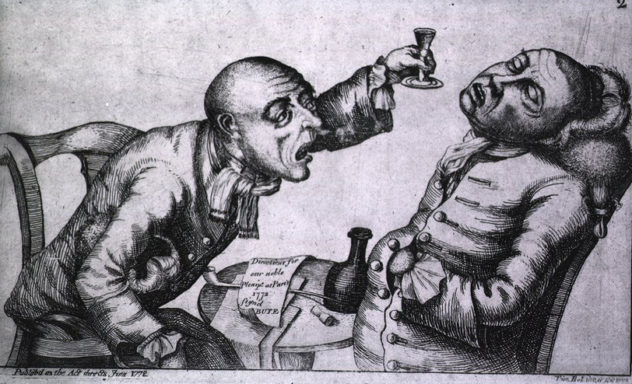
The fate that waited for York’s 19th century executioner William Curry was not a split-second end at the business end of a blade, but a heartbreaking, slow decline into alcoholism and despair.
Curry never actually applied to be an executioner. Convicted of stealing sheep and facing transportation to Australia, he was waiting for his sentence to be carried out when the post of executioner became vacant. It was his way to stay in England, and he took it.
Still a prisoner for the first 12 years he acted as executioner, he turned to alcohol to get him through the hangings. His alcoholism so impacted his ability to do his job, and he was known as the “bungling executioner”, the title of a man that no one wants to ever, ever have to rely on. By 1821, he was staggering to work, and when he was preparing the noose before a crowd gathered to see a thief named William Brown hanged, their restlessness annoyed him so much that he began taunting them to come up and try the noose out for themselves. Only a few months later, Curry was tasked with overseeing the execution of five men at once. They died, but Curry was so drunk and disorderly that he couldn’t keep track of where he was, and also fell through the trap door.
Curry’s last job was the hanging of Ursula Lofthouse, who had been convicted of poisoning her husband. Two thieves were also hanged on that day, and after Lofthouse’s execution for ending the life of her abusive husband, Curry staggered off to a nearby pub and retired. Undoubtedly unfit for anything else, he spent the rest of his life laboring in another kind of prison: a workhouse.
4John Price
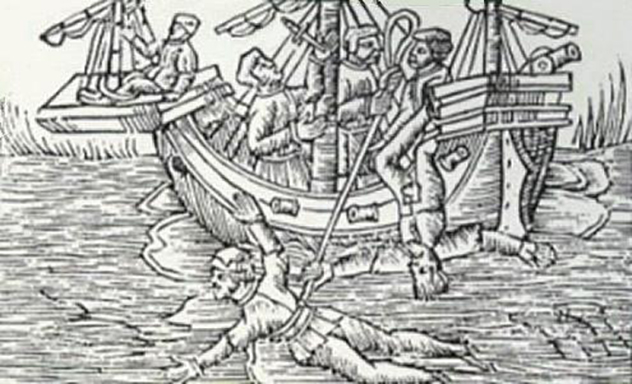
Even as a youth, John Price was known to be such a liar that when he admitted that he had been the one to rob a woman on the road to London, magistrates took that as a sign that he was actually innocent and sent him on his way. He ended up in London, where he was involved in all sorts of unsavory activities that eventually got him arrested, sentenced to Newgate and passed off to serve on a merchant ship. There, they had so much trouble with him that they keel-hauled him before dropping him off in Portsmouth.
Returning to Newgate several more times, he eventually managed to work his way up through the food chain when he married a young woman named Betty. Betty worked at Newgate running errands, and apparently giving the impression that he was changing his ways, he was appointed the executioner of Middlesex.
Throughout his career as a government official, he managed to keep from changing his ways too much. He earned some extra money selling the dead men’s clothes, and his only reported complaint about his new life was that he was now held accountable for hurting or killing people.
Eventually, all Price’s dark desires caught up with him. After assaulting a pastry-seller named Elizabeth White and beating her so badly that her eyes burst from her skull, Price was apprehended by two men who had been passing by and heard her cries. White died from her injuries a few days later, and the executioner was sentenced to hang. Price was left hanging by the noose for an appropriate amount of time before he was gibbeted and put on display in Holloway.
That was in 1718, and it was far from the end for Price. His body was finally buried at Ringcross in Holloway, and in 1834 construction workers laboring on the roadways dug up a skeleton still wearing irons. Price was the only condemned man that the skeleton could be, and before being buried again he was put on display at the Coach and Horses pub.
3Louis Congo

Louis Congo was a slave living in Louisiana when he was freed by government officials and appointed the state’s executioner. His appointment in 1725 was largely based on the idea that giving a former slave the power of life and death over men and women of any color was going to send a very clear message—and to those that thought they were superior to Congo, it was going to add insult to injury.
Congo’s name crops up a lot in Louisiana records for the next decade and a half or so. What we do not know is what ultimately happened to him, as he drops out of history at some point in the 1730s. Whether he retired, disappeared, or fell victim to a worse fate is debated, but we do know that while he held his office of dubious honor, he did not have an easy time of it.
He was responsible for everything from issuing beatings as punishment for crimes and offenses to running people out of town—permanently—to seeing them hanged or broken on the wheel. Powerful, certainly, but he was also called a bourreau. The term, referring to his job as executioner, was one of the most brutal insults of the day.
A year after he took his office, three runaway slaves broke into his home and dished out a severe beating of their own. It would not be the last time Congo was attacked, either, and it would ultimately fall to him to enforce the court’s sentences on his own attackers. Congo’s precarious position in society meant that those punishments had to do more than hurt the people who had committed the crime. They had to send a very clear message that attacks on any government official would not be tolerated.
The records of Congo’s activities as executioner end in 1737.
2John Ellis
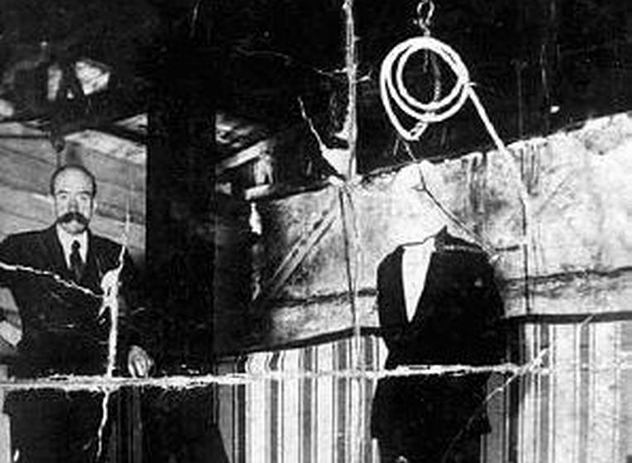
John Ellis was born in 1875, and he went from spinner to hairdresser to executioner. He served as a hangman from 1901 to 1924, resigning amid rumors that he had been so disturbed by the execution of Edith Thompson that he could no longer do his job.
By the time Thompson went to the gallows for her part in the murder of her husband, Ellis had already executed some pretty famous names that included the likes of Dr. Hawley Harvey Crippen and Sir Roger Casement. No stranger to what happened to the human body in the instant it reached the end of the noose, Thompson’s execution was nonetheless a bad one. Prison records suggest that Thompson might not have been as agreeable to the murder as the courts had painted her, and she continued to ask simply, “Why did he do it?”. By the time it was her turn to go to the gallows, she was on the verge of collapse. The guards carried her to the noose, propped her up as she was prepared, and critics would later note that they had essentially hanged a woman who was semi-conscious at best.
After the hanging, it would come to light that her undergarments had been soaked with blood. The rumor was that she had been pregnant.
Her pregnancy was never confirmed, but Ellis sank into a deep pit of depression after the execution. He conducted one more hanging—that of Susan Newell, who had murdered a paperboy when he had refused to give her a free paper—before he retired.
Following his retirement, Ellis penned his memoirs. His first suicide attempt—by hanging – was done when they were published in early 1924. A few years later he took a job on the stage, playing a hangman in a production about the crimes and death of murderer Charles Peace. The show went under, but Ellis used the set’s scaffold and continued to stage his reenactments. Perhaps not surprisingly, this did not seem to help his mental state and in 1932, he succeeded in killing himself by taking a razor blade to his own throat.
1Paskah Rose and Jack Ketch
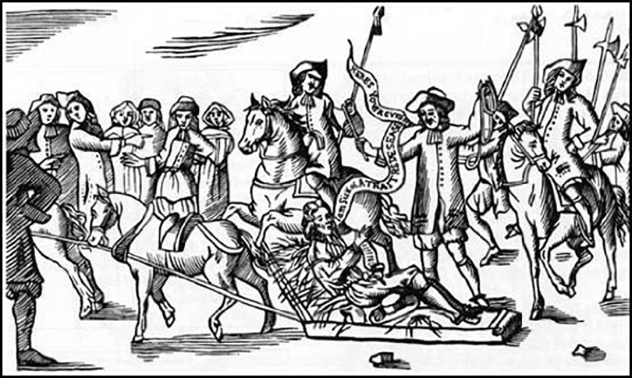
Jack Ketch was one of England’s most infamous executioners, and his name has become synonymous with his occupation. Future executioners were also referred to as a “Jack Ketch”, and he was immortalized in later Punch and Judy shows.
Ketch was not without his issues, though, and even though information is sketchy at best (which is not surprising for the 17th century), we know that Ketch found himself in prison for the crime of “affronting” a sheriff. While he was there, his assistant, Paskah Rose, was appointed chief executioner in his place.
The job apparently was not enough to keep his schedule—or his pockets—full, and Rose, along with an accomplice named Edward Smith, resorted to some good, old-fashioned, breaking and entering. On April 31, 1686, they were indicted on charges of breaking into the home of a man named William Barnet and stealing a coat and some other clothes. They did their breaking, entering and stealing in broad daylight, so it was not entirely unsurprising that a neighbor saw them and gave chase. The pair managed to ditch some of their ill-gotten goods, but when they were arrested police found Rose had stuffed some of the clothing down his pants in a rather unsuccessful attempt to hide his booty.
Found guilty of the charges leveled against them, Rose and Smith were both hanged at Tyburn on May 28 of the same year. Rose’s old mentor was released from jail to execute him, and Ketch himself died later that year.








